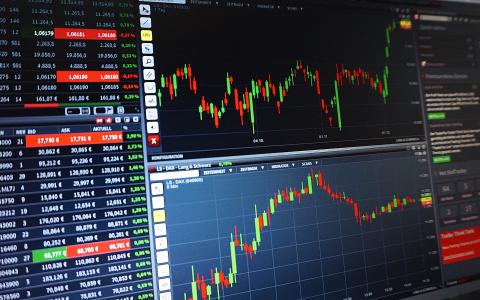
(Bloomberg) - Markets should brace for a deep US recession that warrants a dramatic one percentage-point interest-rate cut by the Federal Reserve, warned DoubleLine Capital’s Jeffrey Sherman.
It’s a bold call based on weakening economic data that makes a recession probable next year for Sherman, coming even as the Fed is expected to hike further this week. Money markets are already betting on a total 130 basis points of Fed cuts in 2024, but Sherman thinks policymakers will end up being slow to act and then have to unleash the biggest cut since the pandemic struck.
“A multitude of economic indicators we look at are flashing either warning or recessionary signals,” said Sherman, deputy chief investment officer at asset manager DoubleLine, in an interview. “By the time they cut, it will be 100 basis points.”
Clash of Fed Hawks and Doves Deepens, Clouding Outlook for Rates
Sherman, known for his eponymous bond gauge of interest-rate risk, is preparing for this outcome by seeking the safety of long maturity government bonds. He is buying 10-year and 30-year Treasuries, seeing no problem if the Fed raises rates further this week as he judges long-dated yields to have peaked.
Ten-year US yields are 3.9%, having dipped after breaking above 4% several times in the past year as markets wrestle with when global central banks will end the steepest rate-tightening cycle in decades. Short-dated yields are still much higher, an inversion that historically has signaled recession, and Sherman is not taking that lightly.
Bond Traders Bet on ‘Nirvana’ in New Decoding of Yield Curve
“The bond market is telling the Fed that they’ve overtightened and they will have to cut rates,” said Sherman. “But the Fed will be a little late to cut, maybe in an emergency meeting. But the idea that the Fed is going to cut 25 or 50 basis points and that’s going to solve everything isn’t going to be the case.”
His approach is consistent with his own bond measure. The Sherman ratio, which represents yield per unit of duration, signals it’s a good time to buy bonds. On the Bloomberg USAgg Index, it’s increased from 0.21 two years ago to 0.77 today. That means it would take an 77 basis-point rise in rates over one year to offset bond income.
Sherman said the ratio in his portfolios is close to 1.00, and that’s the best in nearly six years. DoubleLine, founded by Jeffrey Gundlach, manages $92 billion.
He also owns shorter-dated investment-grade corporate bonds as he feels it’s too early to give up their solid yields and worry about default, because most quality companies have extended the terms of their debt. That implies he doesn’t see any recession coming this year.
“There are a lot of things that say in the next 12 to 18 months we could probably get there,” he said. “The market will be forward looking. The barbell structure allows us to stay somewhat comfortable owning credit now,” he said, referring to a strategy dividing a portfolio into low-risk and higher-risk elements.
Despite resilience in some economic numbers, particularly in the US jobs market, others are starting to show cracks. The New York Fed’s US recession gauge hit a 40-year high in June.
Sherman warned that the loan market, not high-yield corporate bonds, will probably lead the default cycle this time around. Refinancing in the high-yield space will not pick up until later next year, while for investment-grade credit that won’t happen until 2025, he said.
This month, Moody’s Investors Service said the default rate for speculative-grade companies worldwide is expected to hit 5.1% next year, up from 3.8% in the 12 months ended in June. Under the most pessimistic scenario, it could jump as high as 13.7% — exceeding the level reached during the 2008-2009 credit crash.
“I think one signal to watch now is the rising default rate within the loan market,” said Sherman. “These loans are floating rate and have felt the full impact of the Fed’s hiking versus the fixed-rate market that has time before their rates reset.”
By Anchalee Worrachate
With assistance from Aline Oyamada and Gem Atkinson



